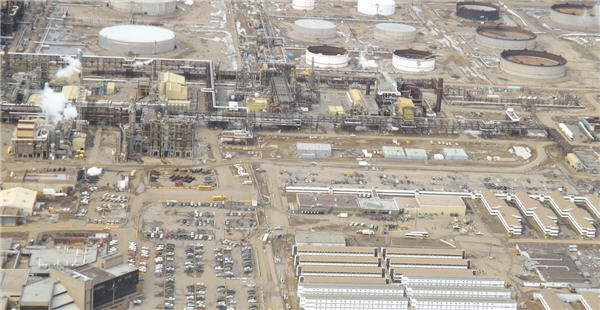
Mildred Lake Plant Site at Syncrude | Photo by Jason Woodhead
Canadian Oil Sands says high taxes are to blame for its dwindling cash flow over the past year, which went from $1.6 billion in 2012 to $1.3 billion in 2013, though this was partially offset by a higher price.
Lower sales volumes also contributed to weaker performance. The company posted net income of $834 million for the year compared with $973 million the year before.
Current taxes increased in 2013 primarily because tax pools and the partnership structure sheltered the majority of 2012 income from current taxes, the company wrote. Also, taxes on a portion of income generated in 2012 were deferred to 2013.
As expected, capital expenditures increased in order to execute major capital projects at Syncrude, of which Canadian Oil Sands is the biggest shareholder.
“We achieved a key milestone during the quarter with the completion of two of Syncrude’s major projects,” CEO Ryan Kubik said in a statement. “We can now look forward to the completion of the remaining two projects and the potential for free cash flow expansion following the decline in capital expenditures after 2014. Syncrude operations performed largely as expected in the fourth quarter of 2013 and we remain focused on delivering more consistent production levels in 2014.”
Syncrude – a joint venture between Canadian Oil Sands, Imperial Oil, Suncor Energy and several other smaller stakeholders – bumped up production slightly during the last quarter of the year, though total output for the year of 97.5 million barrels was 7.4 million barrels shy of 2012 levels.
Canadian Oil Sands doesn’t anticipate any major production boosts in 2014. Estimated annual production for Syncrude ranges bewteen 95 million and 110 million barrels.
The company estimates cash flow from operations of $1.2 billion and plans to settle an account of around $500 million for taxes and Crown royalties, though current taxes are estimated to decrease to $200 million in 2014.